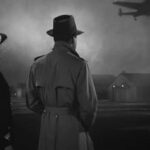I started writing a short history for each of the Top 100 films on the American Film Institutes list, and then I realized that the AFI list is problematic for a few different reasons. It only represents the opinions of film critics, it stays within the boundaries of Hollywood and American born films, and it tends to pander towards the classics with films that were extremely important but don’t necessarily represent the opinions of those that watch them, the movie going public.
So, I present the exact same project with the Top 100 movies from The Internet Movie Database’s Top 250 list. The IMDB list is a much greater tool, and one I’ve used in the past because it’s dynamic. Over the course of the years it has changed substantially adding new films, removing old films and generally reflecting the opinions of those that watch the films.
Number four on the list is of little surprise, and after number three only the second sequel in the history of motion pictures to win Best Picture. Lord of the Rings: Return of the King is the opus finale to Peter Jackson’s loving tribute in film to J.R.R Tolkien’s Lord of the Rings trilogy. Filmed simultaneously over a two year period in New Zealand the three films released in December from 2001-2003. The Return of the King as the final film was honored by the academy for the work accomplished in all three films, winning 11 Oscars in 2004, tied for the most ever won. It now sits as the second highest grossing film of all time.
The story of Tolkien’s epic is as familiar as any archetype in television or film today, as it both assimilated many of the ideas of the past and spawned essentially the entire fantasy genre as we know it today. In this final installment, the forces of Mordor under the command of Sauron who’s power is becoming increasingly far reaching attack the forces of men. The film is littered with epic battles, the final leg of Frodo and Sam’s journey to Mount Doom with the Ring of Power, and the eventual defeat of the evil forces. Summarizing would take longer than a simple article could ever hope to achieve and ignoring the first two chapters would be blasphemous.
Fans of the novels and films have noted a few inconsistencies within this film more so than with the other films, mainly because of Jackson’s realignment of certain timelines. Events such as Saruman’s death are actually events from The Two Towers but were moved for various reasons (ironically this scene only appears in the extended edition of the film). Subplots were added with Arwen’s illness and the rift between Sam and Frodo over Gollum, all for dramatic effect and to enhance their characters. The Scouring of the Shire scene is cut altogether, and Jackson almost took the step of having Sauron enter the final battle himself, but decided against it at the last minute.
The film’s impact not only on cinema, but on the fantasy genre itself is still felt today with an influx of fantasy related films and books as the interest in Tolkien’s original source material multiplied tenfold itself. The quality of production and dedication of the director are the stuff of legends as Peter Jackson has been declared the only true official hobbit a fan worthy of having made these films.





